Imagine the invigorating aroma of fresh mint wafting through your kitchen, even in the dead of winter. Whether you’re a beginner dipping your toes into the world of indoor gardening or a seasoned plant enthusiast seeking a new challenge, growing mint indoors is a delightful endeavor that promises lush greenery and endless culinary possibilities. This guide is your key to unlocking the secrets of thriving mint plants, offering clear, actionable steps that cater to every level of gardener.
By cultivating mint indoors, you’ll enjoy the practicality of having fresh leaves at your fingertips, ready to enhance your teas, cocktails, and dishes with a burst of flavor. Beyond its culinary uses, mint can improve your indoor environment, adding a touch of nature to your home and purifying the air. With our expert tips, you’ll cultivate confidence alongside your mint, discovering the simple joys and abundant rewards that come with nurturing this versatile herb indoors.
Choose a Sunny Windowsill Spot
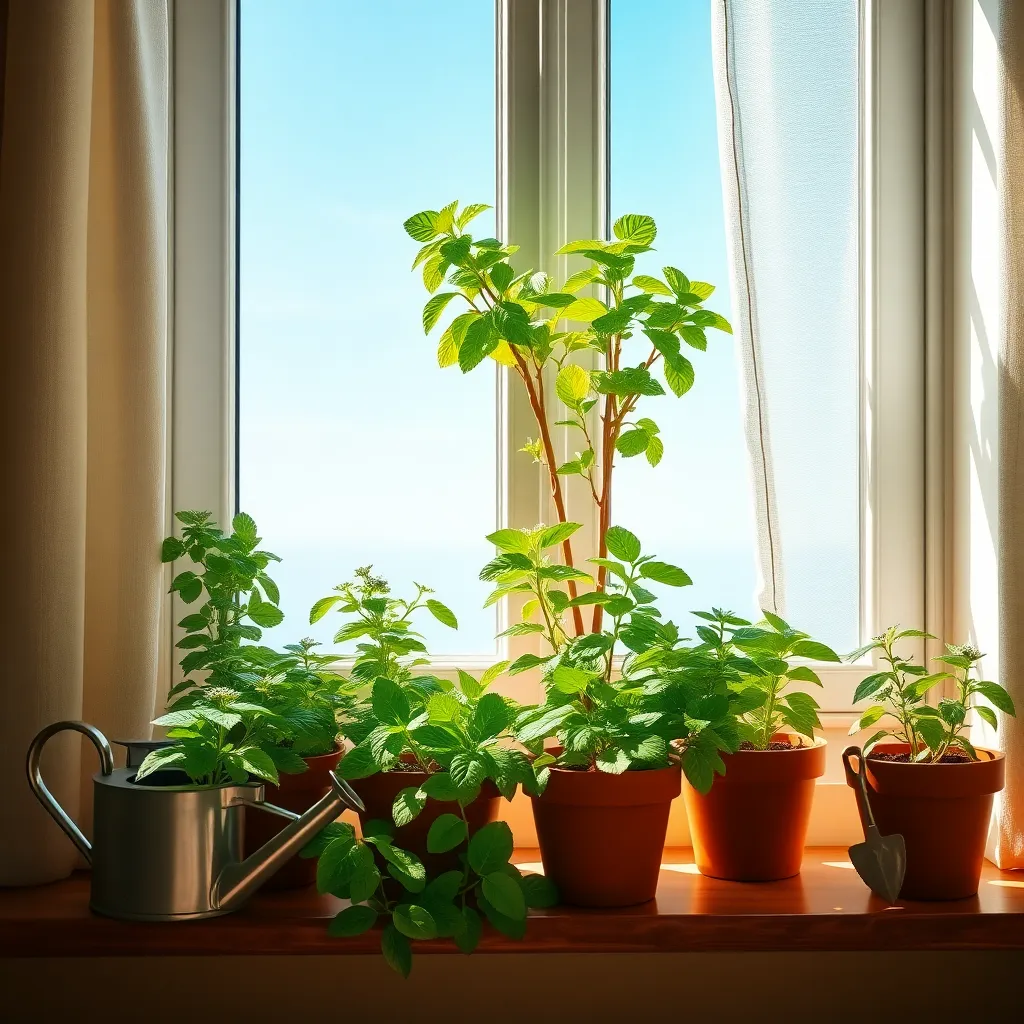
Positioning your mint on a sunny windowsill is crucial for its growth. Mint thrives best in bright, indirect sunlight, ideally receiving about four to six hours of sunlight each day.
To ensure optimal light exposure, choose a windowsill that faces south or west. These orientations typically receive the most consistent light throughout the day, promoting vigorous growth.
Adjust the position of the mint pot as needed to prevent the leaves from getting scorched during intense summer afternoons. If necessary, use a sheer curtain to diffuse the sunlight, ensuring your mint gets ample light without the risk of burning.
For those with limited sunlight access, consider supplementing with a grow light to mimic natural sunlight. Position the grow light about 6-12 inches above the plant and run it for 12-16 hours a day to maintain healthy growth.
Water When Soil Feels Dry
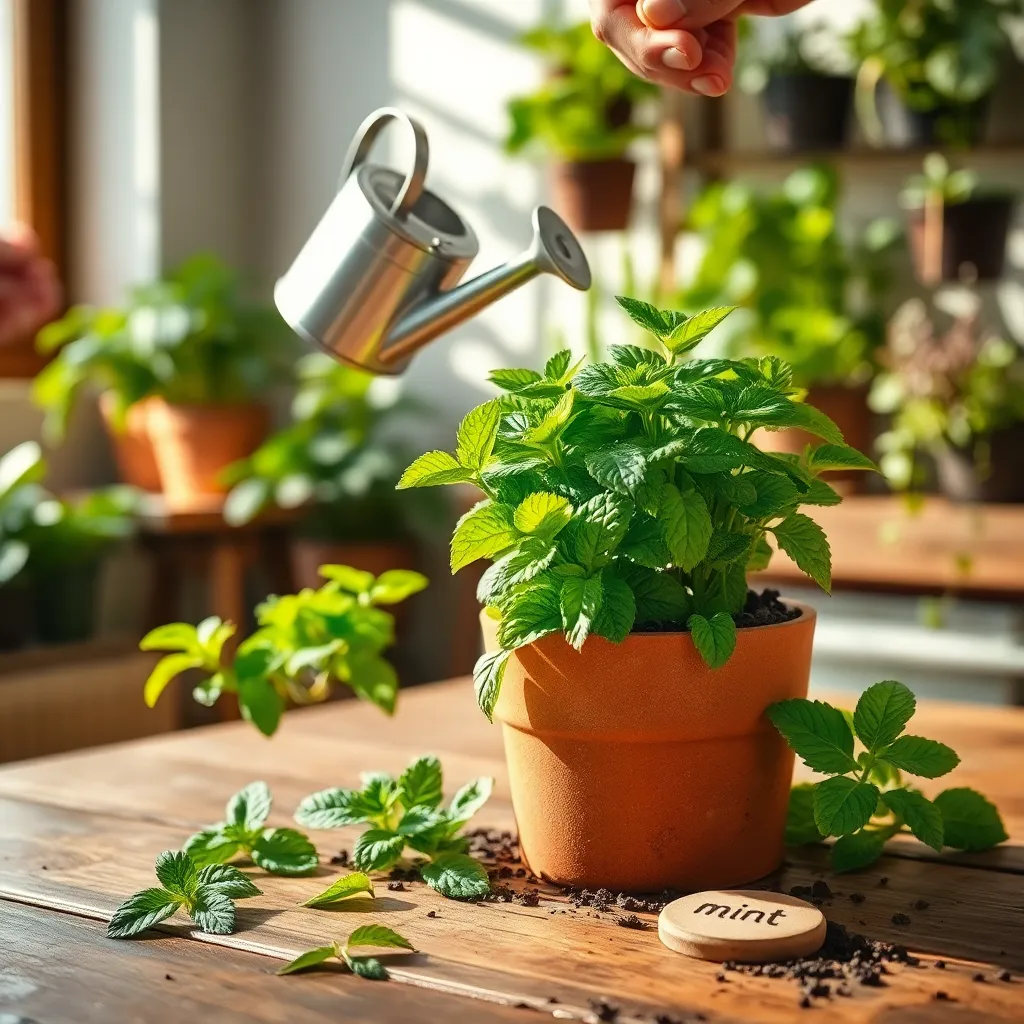
When growing mint indoors, it is crucial to water the plant only when the soil feels dry to the touch. This ensures the roots are not sitting in water, which can lead to root rot and other moisture-related issues.
To check for dryness, insert your finger about an inch into the soil. If it feels dry at this depth, it’s time to water your mint generously until water drains from the bottom of the pot.
For those who prefer a more precise method, use a moisture meter to gauge soil moisture levels. This tool can provide a more accurate reading and help prevent overwatering.
As mint enjoys consistently moist soil, aim to maintain this balance without letting the plant sit in excess water. Consider using a well-draining potting mix to enhance drainage and keep the roots healthy.
Use Well-Draining Potting Mix
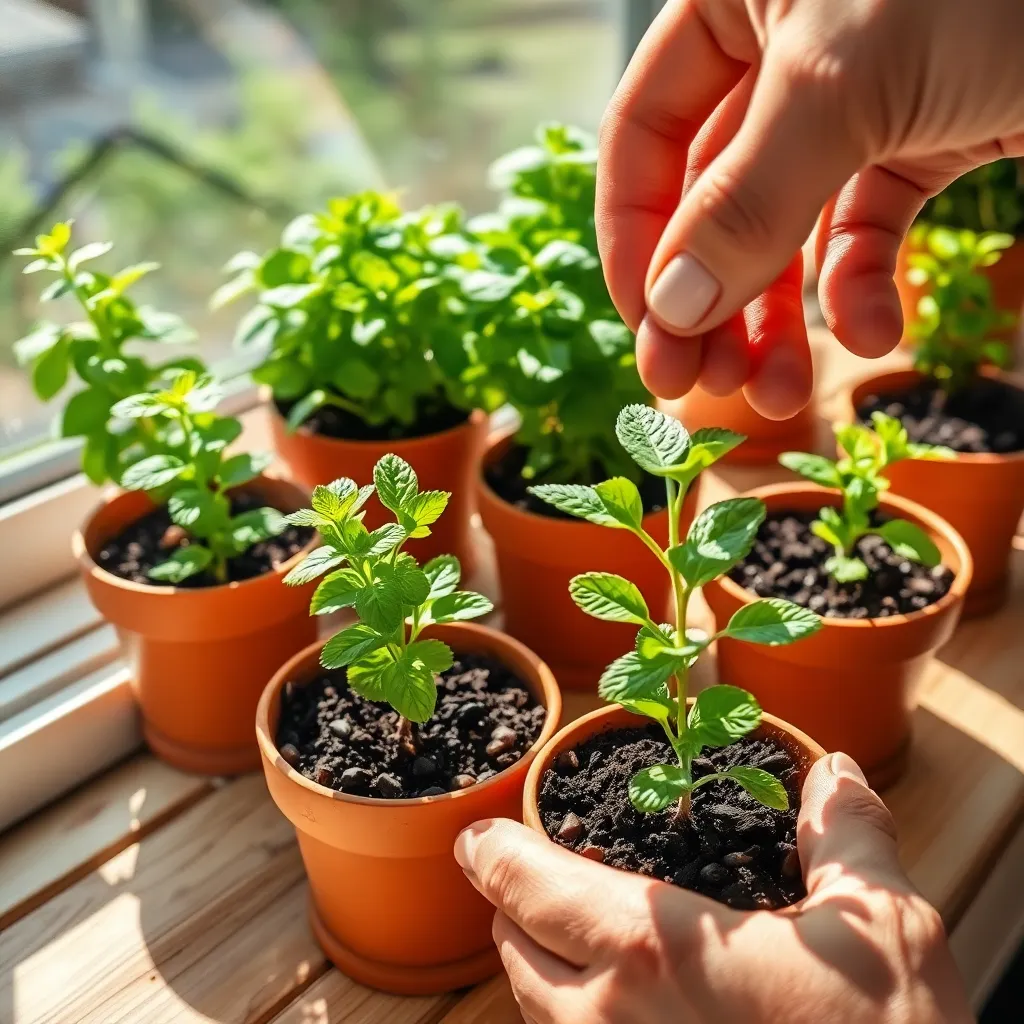
Choosing the right potting mix is crucial for growing mint indoors, as it ensures the plant’s roots receive enough air and nutrients. A well-draining potting mix prevents water from sitting in the pot, which can lead to root rot, a common issue with indoor plants.
For best results, select a potting mix that contains a blend of materials like peat moss, perlite, or vermiculite. These components help maintain the right balance of moisture and aeration, ensuring that mint roots thrive in their environment.
Avoid using garden soil since it tends to compact in containers, restricting air flow and water drainage. Instead, look for a high-quality commercial potting mix specifically designed for container gardening, which usually includes the right combination of ingredients for optimal drainage.
Advanced gardeners might consider creating their own potting mix by combining equal parts of peat moss, perlite, and compost. This custom blend not only supports healthy plant growth but also allows you to control the nutrient content more precisely.
Prune Regularly for Bushier Growth
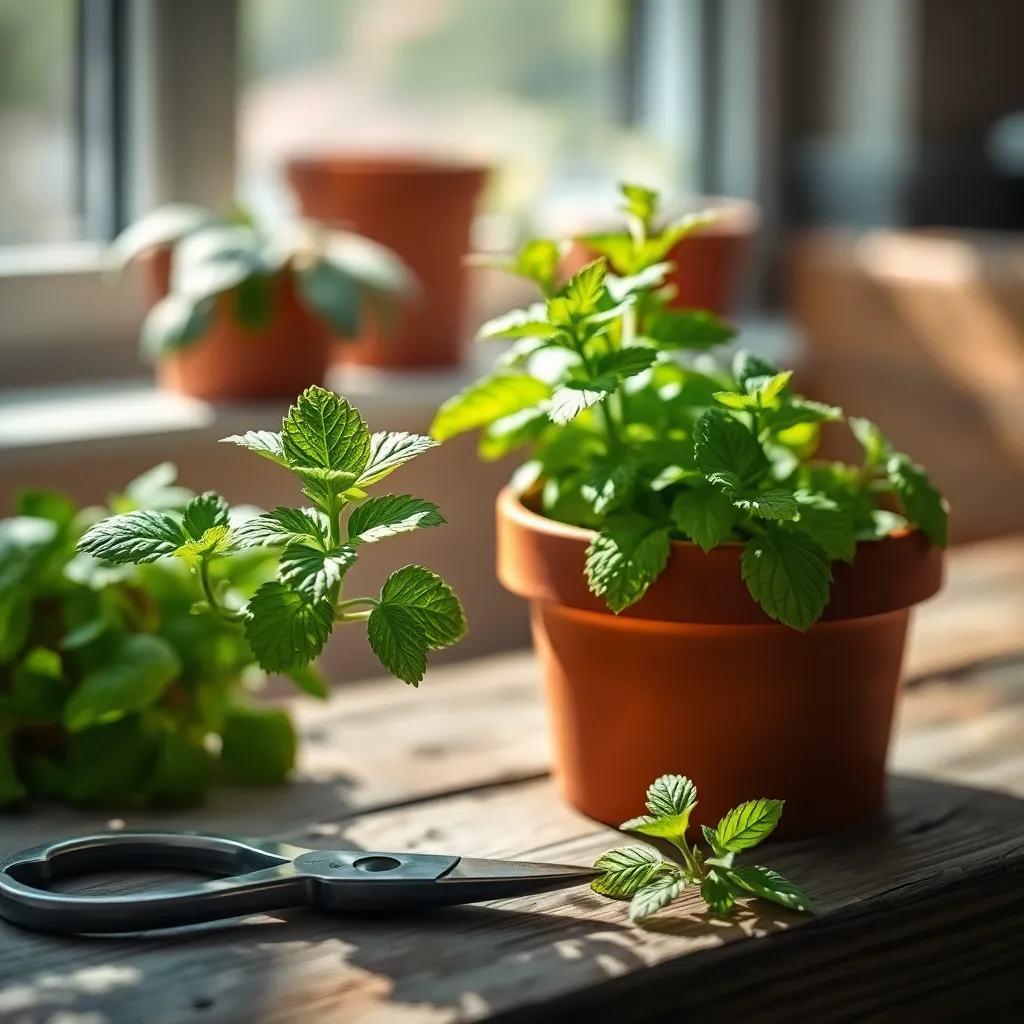
Regular pruning is essential for encouraging mint plants to develop a bushier and healthier growth habit. By trimming the top leaves and stems, you stimulate the plant to produce new shoots, resulting in a fuller appearance.
When you notice your mint plant reaching about six inches in height, it’s time to trim it back. Use clean, sharp scissors to cut the stems just above a leaf node, which is the point where leaves emerge from the stem.
Encourage branching by pinching back the growing tips regularly. This practice not only promotes a bushy growth pattern but also prevents the plant from becoming leggy and sparse.
For those looking to maximize their harvest, consistent pruning can result in a more abundant yield over time. Remember, mint is a vigorous grower, so don’t be afraid to prune it often—it’s an integral part of keeping your plant thriving indoors.
Rotate Pot for Even Sunlight
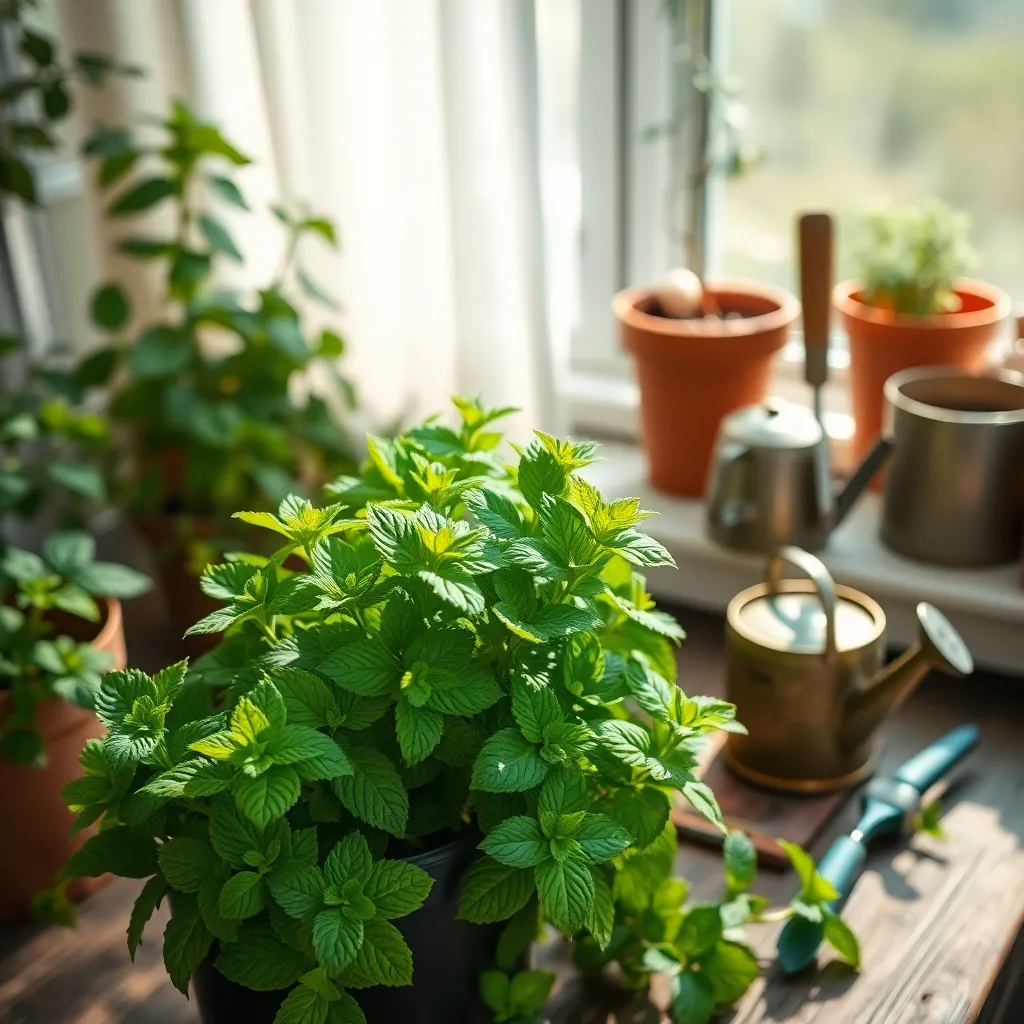
To ensure your indoor mint plant receives even sunlight, it’s important to rotate the pot regularly. This simple action prevents one side of the plant from becoming leggy due to reaching for light.
Consider turning the pot a quarter turn every few days, which helps distribute sunlight exposure evenly across all sides of the plant. This practice will promote a more balanced and bushy mint growth, enhancing its overall health.
For those with a south-facing window, your mint may receive ample light, but rotation still plays a key role. Check the plant’s orientation weekly and adjust as needed to prevent uneven growth.
Inadequate lighting can be supplemented with a grow light to ensure all parts of the plant thrive. When using artificial lighting, rotate the plant as you would with natural sunlight to ensure even exposure.
Conclusion: Growing Success with These Plants
In nurturing the relationship between your home and fresh mint, we’ve explored five essential concepts: understanding mint’s needs for light, water, and soil; the importance of regular pruning to promote growth; how to manage pests naturally; the benefits of companion planting; and the joy of harvesting for culinary delight. These principles not only cultivate a thriving mint plant but also mirror the care and attention required to nurture personal relationships.
As your actionable next step, choose one concept to implement today—perhaps start by adjusting your mint’s light exposure or planning your first harvest. Doing so will not only enhance your mint-growing skills but also encourage you to apply the same dedication and mindfulness to your interpersonal connections.
Remember to bookmark this article for future reference, ensuring these insights are always at your fingertips as you cultivate both plant and personal growth. As you continue to nurture this green companion, anticipate the flourishing of your relationship skills, leading to deeper, more meaningful connections. Your journey to relationship success is just beginning—embrace it with confidence and care.
